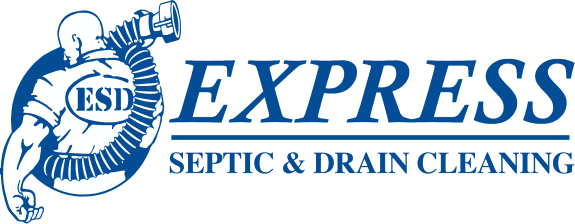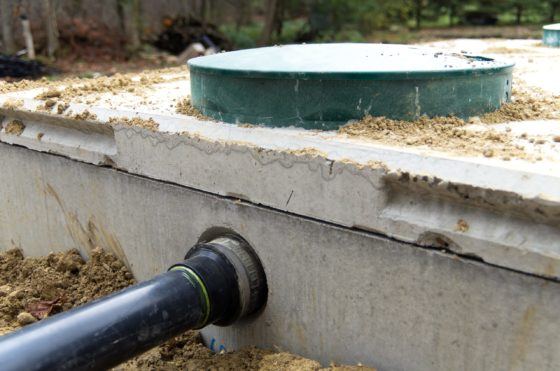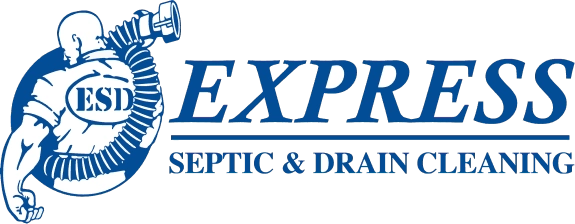The desire to own a home is common among Americans. When you own a house, you must get accustomed to caring for it. Daily tasks include cleaning, tossing the garbage, and completing little duties like washing dishes. However, there are essential jobs like furnace and HVAC maintenance. All these activities are necessary for maintaining your house, but they may occasionally become stressful and cause people to forget to do tasks.
One of the home maintenance tasks you shouldn’t skip is septic tank cleaning. The last thing you want is to flush anything down the toilet in the mistaken belief that you are saving money only to have it return to haunt you in your home or yard.
What Is a Septic Tank?
A septic tank is an enormous, subsurface container/tank that may hold hundreds of gallons of sewage. The leading plumbing line connects the house’s septic tank to it. This line supplies the septic tank with the wastewater drains from the house’s sinks, toilets, showers, and bathtubs. Standard septic tank sizes include 1,000 gallons, 1,200 gallons, 1,500 gallons, and so on.
Septic systems are frequently used in rural areas without centralized sewage systems because they treat wastewater underground. They integrate existing technology with natural processes to clean wastewater from residential plumbing, including that produced by bathrooms, kitchen drains, and laundry. A drain field is often referred to as soil absorption, and a septic tank makes up a standard septic system. The objective of a septic tank is to decompose organic matter and remove sediments, floatables, and oils from wastewater.
Pumping the Septic Tank
Septic tanks need to be pumped out often by homeowners to maintain them in good condition. Often, they may question why they need to plan this vital maintenance operation if they are unfamiliar with septic tank pumping or how septic tanks function. Property owners can better appreciate the advantages of routine pumping by better understanding how a septic tank works.
The tank’s bottom will eventually fill with muck. Although bacteria do assist in managing the quantity of sludge in the tank’s base, they cannot totally eradicate waste and keep the tank clean since they cannot break down waste quickly enough. As a result, sludge is taken from the tank, and it is emptied when it is pumped.
Problems From Skipping Septic Tank Cleaning
Sludge Buildup
There is presumably a lot of sludge in a septic tank that has never been drained out, even though nobody likes to worry about it if you have sludge buildup. This is because sludge accumulation happens gradually over time. The septic tank’s purpose is to accept solid wastes, decompose them, and then distribute the resulting liquid into the drain field. However, sludge will still accumulate in the tank (faster if you flush anything improperly). The tank is complete if the sludge has accumulated too much.
Backflow
Backflow is an unforeseen issue brought on by blocked drain fields and an excess of waste in the system. It happens when your septic tank backs up into your home and is just as nasty as it sounds. The waste can back up into your toilet, shower, sink, and other places. Without septic pumping, it is unsafe, unhygienic, and impossible to remedy.
Clogging
It is improbable that your septic tank is already full if it was emptied a year ago. Therefore, you can likely have a blockage between your home and septic tank, or possibly in one of the branching drainage lines that connect different rooms and plumbing systems. Determine the potential location of the obstruction. If the drains in your home are all draining slowly.
Slow Drains
Your home’s drains will begin to slow down if the sludge level in your septic tank reaches a certain height. After you’re finished washing dishes, you can observe the water. However, if the water is slowly emptying from your sink, you may have a problem.
As you shower, if you see water remaining in the tub, you may have a problem. There is nowhere to store the additional water washing down the tubes, which causes the drains to move slowly. Even if it’s still draining, the slowness warns you that things will worsen if you don’t deal with the problem.
Damage From Chemicals
The chemicals you use in your house may cause the essential microorganisms in your septic tank to be destroyed if you go long stretches without pumping it. Of course, you can flush various substances down your sink if your home is connected to the municipal sewage system. But the same chemicals might be a big concern if you have a septic tank. Particularly problematic are chemicals that kill the microorganisms in the tank.
Bacteria must break down the solid waste for a septic tank to function. Nothing can decompose the waste if you employ chemicals that kill these microorganisms, so your system fills up quickly. When in doubt, only apply anything labeled as safe for septic systems.
Horrible Odor
A foul smell may persist in the pipes and close to the tank when it’s almost at capacity. Any properly operating septic tank will produce septic smells. This is because gases such as methane, carbon dioxide, and hydrogen sulfide are emitted as the anaerobic bacteria decompose the organic waste. However, because these gases are kept completely closed inside the septic tank, we seldom ever smell them. However, septic odor issues are exaggerated with full tanks.
Sinkholes All Over the Drain Field
When a septic tank is broken down or abandoned, it might result in a sinkhole. For instance, if the ground surrounding your septic tank appears to be sinking, you may have a leak that allows the dirt to wash into your tank. In your yard, this can cause a little sinkhole. However, these sinkholes will be small, so you won’t fall in, but you can trip over them and spray an ankle.
Keep Up With Maintenance
The precise timetable varies from tank to tank; for some, it occurs once a year, but for others, it may happen four to five times. Some people may never need to have their septic system drained. However, routine emptying will maintain your septic tank in top shape and stop any more occurrences of typical septic tank issues.
The majority of septic tank emptying businesses will be able to fit you in, so it’s crucial to stay on top of your calendar. If you know it happens annually, reserve the same day with the same business each year, and you’re good to go.
Who We Are
Since 2006, Express Septic & Drain Cleaning has provided local septic tank services to Idaho residents in the Caldwell and Nampa areas. Our number one priority has always been and will continue to promptly attend to our clients’ demands while also ensuring that their property is properly cared for. Several different septic tank services are offered by Express Septic & Drain Cleaning, such as septic pumping, repair, installation, and more. In addition, we offer drain field replacement and enzyme treatment.
According to the Environmental Protection Agency, your septic tank should be drained every three to five years. Regular inspection, testing, and pumping of your tank can prevent future costly and sometimes dangerous health problems. You can count on us to take care of your overall septic tank needs and conduct preventive maintenance. Call Express Septic & Drain Cleaning today to see how we can help you.



